Introduction: In this article – to help celebrate Independence Day on July 4 – Melissa Davenport Berry profiles some Revolutionary War heroes and their descendants, and provides genealogy. Melissa is a genealogist who has a website, americana-archives.com, and a Facebook group, New England Family Genealogy and History.
With Independence Day aka “Fourth of July” approaching, I look back on events, people, and places that brought America its freedom, including some descendants, many who helped to secure and maintain that freedom. Because the 4th is a time commemorating the Declaration of Independence (which was ratified by the Second Continental Congress on 4 July 1776, establishing the United States of America), it is important to trace its origins.
For this series I’m using archive photos, and articles from GenealogyBank’s Historical Newspaper Archives.
VP Dawes ‘Meets’ Ancestor Dawes Who Fought in the American Revolution
In this photo, we see (from left to right):
- The 30th Vice President of the United States Charles Gates Dawes (1865-1923), son of Civil War General Rufus and his wife Mary Beman (Gates) Dawes.
- General John J. “Black Jack” Pershing (1860-1948), son of farmer and store owner John Fletcher and Ann Elizabeth (Thompson) Pershing.
- Harold Isaac Slocomb (1895-1954), son of Isaac Leonard and Lona (Diffin) Slocomb, impersonating American Revolutionary soldier William Dawes Jr. (1745-1799), son of William Sr. and Lydia (Boone) Dawes.
Dawes Jr. was one of several men who, in April 1775, alerted Minutemen in Massachusetts of the approach of British regulars prior to the battles of Lexington and Concord at the outset of the American Revolutionary War.
Vice President Dawes is a direct descendant of William Dawes.
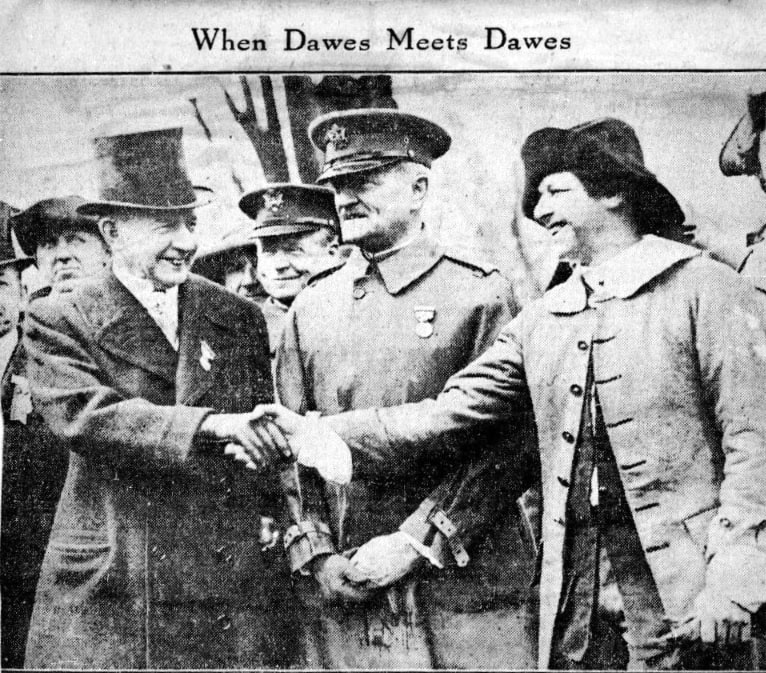
Shots Heard around the World and the Descendants of the Minutemen Who Fired Them
The Boston Journal in 1904 published an article about the Minutemen and militia of the Revolutionary War and their descendants. The article features a photo of “The Minute Man” statue completed by sculptor Daniel Chester French in 1874, located at the North Bridge in Concord, Massachusetts. Inscribed at the base is the opening stanza of poet Ralph Waldo Emerson’s “Concord Hymn”:
By the rude bridge that arched the flood.
Their flag to April’s breeze unfurled,
Here once the embattled farmers stood
And fired the shot heard round the world.
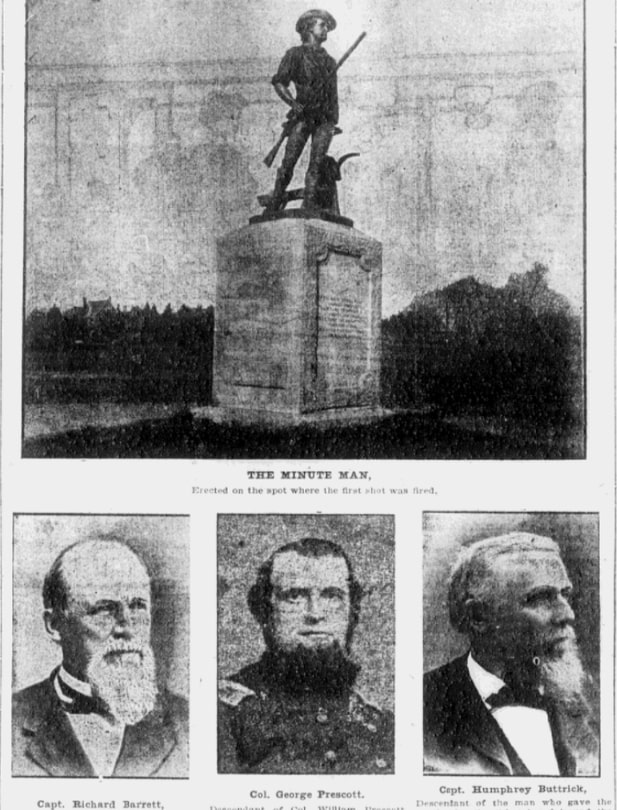
Below “The Minute Man” statue, the article features photographs of three Minutemen descendants:
- Civil War Union 47th Massachusetts Infantry Col. Richard Faye Barrett (1848-1912), son of Richard and Lois Jane (Wheeler) Barrett, and grandson of Col. James Barrett (1710-1779), son of Benjamin and Lydia (Minott) Barrett (she married 2nd Samuel Stow Jr.). Col. James Barrett was in command of the troops during the Battle of Concord on 19 April 1775.
- Civil War Union Col. George Lincoln Prescott (1829-1864), son of Timothy and his second wife Maria (King) Prescott. Ralph Waldo Emerson eulogized Col. Prescott as a man with “a patience not to be tired out, a serious devotion to the cause of the country that never swerved, a hope that never failed.” Col. Prescott is a descendant of Timothy Prescott (1728-1808), a Minuteman at the Lexington Alarm during the Revolutionary War, and is also a kinfolk to Bunker Hill hero Col. William Prescott (1726-1795), son of Benjamin and Abigail (Olive) Prescott.
- Civil War Union Captain Humphrey Hunt Buttrick (1827-1893), son of David and Rebecca (Hunt) Buttrick, and a descendant of Major John Buttrick (1731-1791), son of Deacon Jonathan and Elizabeth (Wooley) Buttrick. Maj. Buttrick was the man who ordered “the shot heard round the world.” As the American forces approached the British regulars at the North Bridge in Concord, Buttrick ordered: “Fire, for God’s sake, fellow soldiers, fire!”
Here are more photos related to three of the military leaders mentioned in this Boston Journal article.
Colonel James Barrett
Here is the gravestone of American Revolutionary War leader Colonel James Barrett (1710-1779), Old Hill Burying Ground, Concord, Massachusetts. He was the commander of the Minutemen and militia in Concord on 19 April 1775 for the Battle of Concord – the first day of the American Revolution. Upon seeing smoke in the town (the British were burning cannon carriages they found), he sent a column of men to march across the North Bridge to ensure that the British forces were not burning the town down. It was at the North Bridge where they engaged the British regulars and forced them to retreat with “the shot heard round the world.”
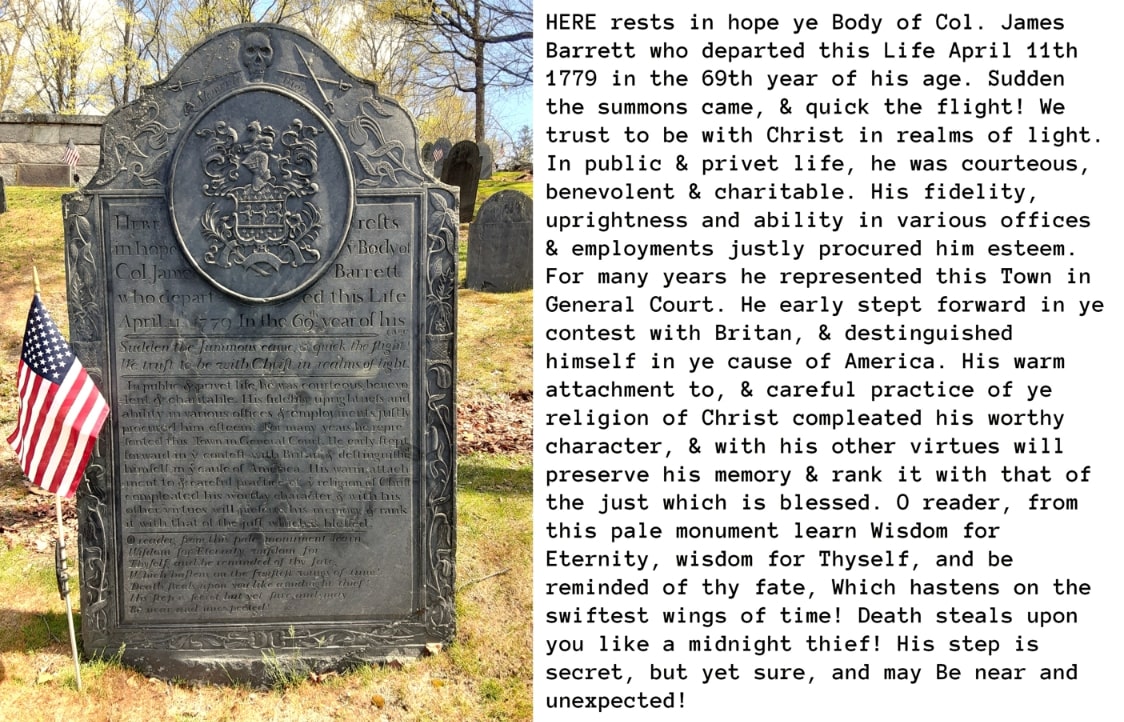
Colonel William Prescott
This is the Colonel William Prescott statue, Bunker Hill Monument, Charlestown, Boston, Massachusetts. Honored for his role in the Battle of Bunker Hill, Prescott’s statue commemorates his command of 1,200 militiamen on 17 June 1775. Though his force was poorly trained and supplied, Prescott managed to repel two British advances and inflict heavy losses before finally relinquishing Breed’s Hill on the third British assault (adjacent to Bunker Hill, Breed’s Hill is where most of the fighting actually took place).
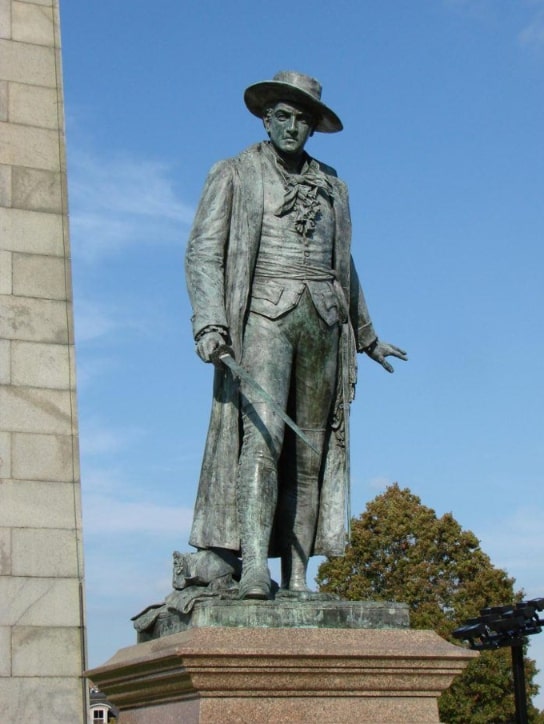
Major John Buttrick
This monument to Major John Buttrick is in Concord, Massachusetts, at the intersection of Liberty Street and Estabrook Road, near the North Bridge Visitor Center in Minute Man National Historical Park. He was one of the leaders of the Concord Minutemen and militia at the Battle of Concord on 19 April 1775.
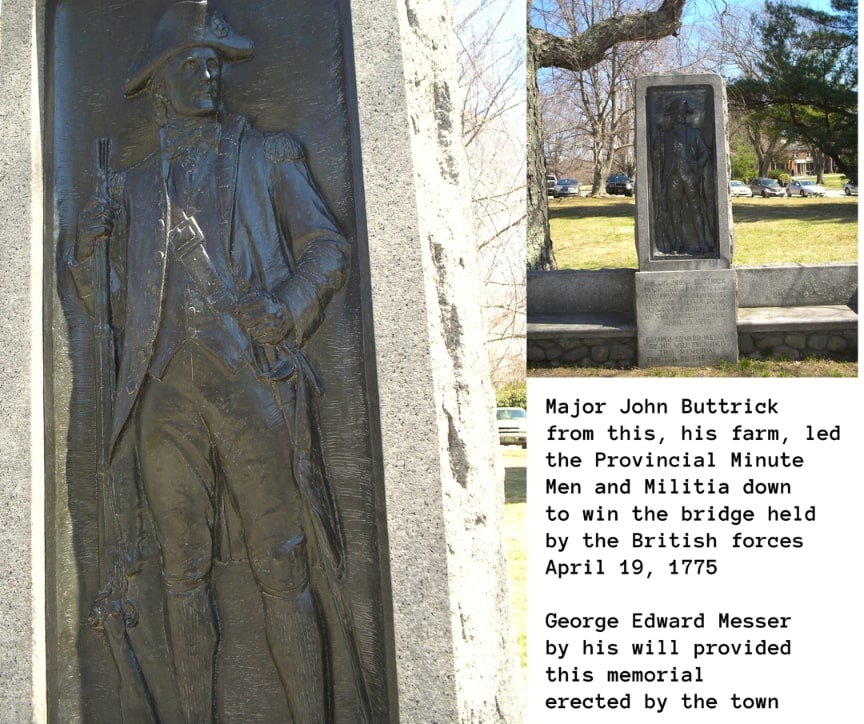
To be continued!
Explore over 330 years of newspapers and historical records in GenealogyBank. Discover your family story! Start a 7-Day Free Trial
Note on the header image: “The Spirit of ’76,” by Archibald Willard. Credit: Wikimedia Commons.
